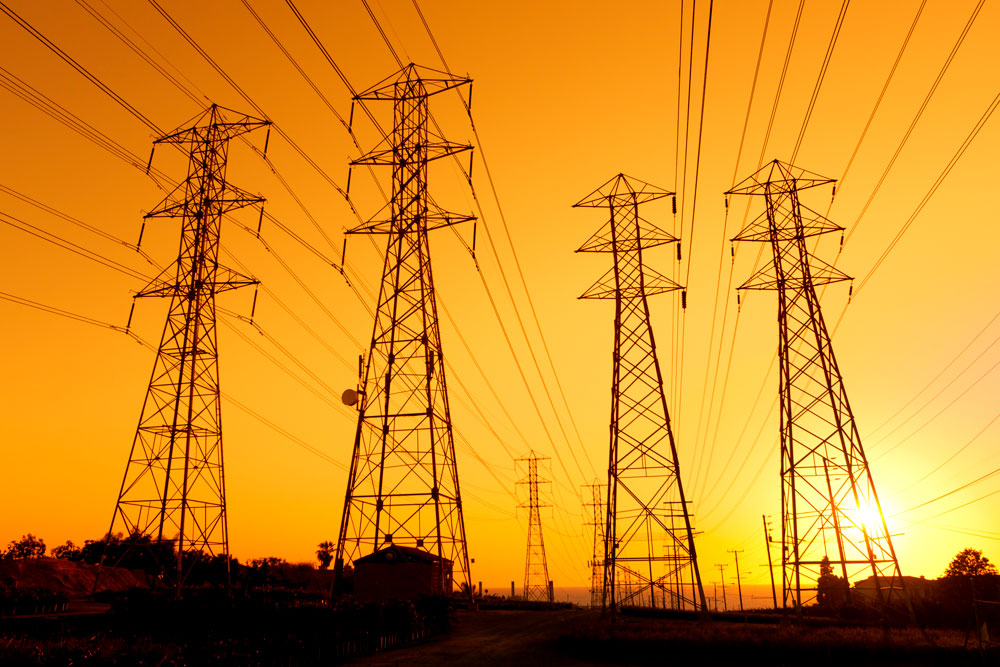
Two new projects on smart grid solutions
Two projects, which will be carried out in co-operation between Indian and Swedish partners, have been granted financial support through the call on smart grids for the future, financed by the Swedish Energy Agency and the Department of Science and Technology, Government of India.
Affectus AB and its Indian partners, among them the meter manufacturer Allied Engineering Works, receive support for the project “Integrated data management system for electricity grids and electricity companies”.
“Our specialty is collecting data by making very frequent readings at many points at the same time in the grid. With the help of these data, you can track causes of interruptions and improve the stability among other things,” says Peter Almström, founder and owner of Affectus.
Bringing experience
The platform for measurement and data management, called Affectus Alba, is used today in Svenska Kraftnät, the state-owned enterprise responsible for ensuring that Sweden’s transmission system for electricity is safe, environmentally sound and cost-effective. All 600 meters in the core network are read at the same time every three seconds.
“We want to take these experiences to India and do something similar through the collaborative project with our Indian partners.”
The main Indian partner is the meter manufacturer Allied Engineering Works. Other Indian partners are the network owner BSES Rajdhani Power Limited and IIT Delhi. On the Swedish side, RISE is a partner.
Further advantages
In addition to better measurement in the electricity grid, Affectus will also make measurements at larger outlet points as well as delivery points. The purpose is to get a better view of the stability and avoid overloads and that the network’s relay protection trips. But there are additional advantages with the measurement and data analysis.
“With better control of voltage drops or increases, the integration of both outlets for charging stations for vehicles and input in form of delivery of solar power to the grid can be facilitated without them causing balance problems. In addition, it gives the network owner the opportunity to open the market for external electricity sellers. With our measurement technology it is possible to identify who has sold to whom,” says Peter Almström.
The work is expected to start before the summer and the project is ongoing until the end of 2023.
Pamoja increases effectivity
Pamoja Cleantech and a cluster of partners, among them Indian companies Madhav Engineers and Sustain Impact, receive support for the project “AI- and IoT-based distributed energy resource management for smart energy storage and automated demand management”. The goal of the project is the development and commercial demonstration of four market-driven energy management system, EMS, in two Swedish and two Indian-led pilot projects in collaboration with first customers.
“We will be using Artificial Intelligence and Machine Learning to improve grid reliability and efficiency. This will reduce operation and maintenance cost for the low-voltage grid for the operators and electricity costs for the consumers, says Nicolas Fouassier,” project manager at Pamoja.
Optimizing stored energy
The EMS that Pamoja has developed as part of the project controls and optimizes the use of battery energy storage system, BESS, located at the transformer level. The EMS will use Artificial Intelligence and Machine Learning to control the charging and discharging of the BESSs based on parameters such as peak- or off-peak hours, transformer load, energy sources or electricity market prices.
“From the customers’ point of view, Pamoja Cleantech’s smart EMS will reduce the electricity costs, and will also improve power quality and reliability which are often problematic in India,” says Nicolas Fouassier.
Longer life of DTs
Another goal is to help the Indian grid owner BSES Rajdhani Power Limited, BRPL, to get the most out of their distribution transformers, DT, and to prolong their lifespan by 10 years.
“BRPL is expecting pre-mature capacity limitations in the next decade at a majority of distribution transformers due to growing load demand expected at 3–10 percent per year. By using real-time transformer rating and short-term load forecasting, Pamoja’s smart EMS will avoid reaching DT capacity limitations and will increase its efficiency. Our solution will therefore help BRPL to get the most out of their DTs for the longest time and the replacement of transformers can be deferred by up to 10 years,” Fouassier explains.
At the transformer level, the DT peak load can be shifted from on-peak to off-peak hours by using energy from the BESS during the peak load hours. By leveraging smart forecasting and flexible charging of the BESS, Pamoja’s smart EMS can reduce up to 30% of DT peak load.
Less diesel
Pamoja are bringing experiences from a similar system into the new project.
“We have installed a 90kW Li-Ion BESS on a 2MW micro-grid setup at Tezpur University in Assam state (India) to balance generation and consumption. Pamoja has developed a smart energy management system to monitor and control the BESS, improve the utilization of renewable energy production on the university, and reduce the use of diesel generators,” says Fouassier.
International project
The project is a sub-project within the international project ANDROYDS. It is carried out together with a consortium of Swedish partners Pamoja Cleantech AB, Modio AB and KTH. Indian organizations in the project are Madhav Engineers, Sustain Impact, Gujarat Power Research and Development Cell, The Energy and Resources Institute (TERI), IIT Gandhinagar and the University of Lucknow.